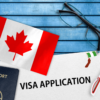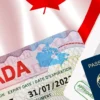Canada Jobs Online
Unskilled Visa Sponsorship Jobs in Canada for Foreigners 2023/24
Are you searching for intriguing unqualified employment opportunities in Canada for foreigners? If your answer is yes, you may relax knowing that this article will give you access to a wide range of job postings, openings, and career opportunities for foreign nationals seeking Unskilled Visa Sponsorship Jobs in Canada.
With over a million open positions, Canada is prepared to accept immigrants from all over the world to fill labor shortages in various industries. While the urgent need for qualified people to fill open high-level positions is frequently emphasized, it is essential to remember that unskilled workers are essential to the Canadian economy. To keep things moving, Canadian firms are in dire need of immigrants with various skill sets.
Experts in the field of employment claim a significant labor shortage in Canada. While the majority of these are skilled positions, there are a sizable number of openings in some unskilled jobs in Canada for foreigners, including 38,000 jobs in construction, 45,900 jobs in hospitality, more than 50,000 jobs in retail, and thousands of driving jobs in Canada, including truck driver and taxi jobs.
Foreigners seeking low-skilled employment in Canada benefit significantly from the availability of these positions. At an alarming rate, unskilled jobs for foreign workers are becoming increasingly prevalent in Canada. Many industrial and agricultural companies in Canada are actively hiring for unskilled labor. Since they require little talent, industrial jobs are the most sought-after and alluring to foreigners.
How to Apply for Unskilled Visa Sponsorship Jobs in Canada.
Below are the steps to apply for unskilled jobs in Canada with visa sponsorship.
1. Find out more about jobs in Canada with visa sponsorship
You should be aware that Canadian employers won’t always support you in the strictest sense regarding sponsorship. However, on your behalf, they will submit a Labour Market Impact Assessment (LMIA) application to Employment and Social Development Canada (ESDC) for you.
What is an LMIA?
An LMIA is a document that gives a Canadian employer the green light to hire a foreign worker. A positive LMIA will conclude that there is a need for a foreign worker to fill the job. Finding an employer willing to sponsor your visa application and guide you through the procedure is necessary if you are determined to work in Canada through visa sponsorship. Your company could make the following obligations if they agree to sponsor your visa fully:
- Paying for your airline ticket
- Helping with accommodation arrangements
- Offering medical insurance for a set amount of time
- Helping you sign up for a provincial occupational safety insurance plan
2. Find out if there’s a NOC code for your job
Canada initially concentrated its efforts on NOC 0, A, and B occupations regarding immigration. Management positions fall under NOC 0, employment requiring a university degree falls under NOC A, while trades and occupations often call for a college education or apprenticeship training fall under NOC B.
However, it should be emphasized that if your profession comes within NOC codes C or D, there are several choices for immigration to Canada. Economic immigration is a powerful instrument for addressing concerns about labor shortages. Most NOC C positions necessitate a high school diploma. Contrarily, NOC D would call for on-the-job training. Butchers, truck drivers, and food service personnel are all NOC C jobs. Fruit pickers, housekeepers, and oil field employees are a few examples of NOC D jobs.
Understanding the National Occupational Classification (NOC) system
The National Occupational Classification (NOC) system is used in Canada to categorize jobs according to their level of competence. However, by the end of 2022, this system will be replaced by the Training, Education, Experience, and Responsibilities (TEER) system.
Some unskilled or semi-skilled jobs in Canada with their NOC codes:
- Nurse aides, orderlies, and patient service associates (NOC 3413)
- Caregivers (NOC 4411 and NOC 4412)
- Butchers, meat cutters, and fishmongers-retail and wholesale (NOC 6331)
- Food And beverage servers (NOC 6513)
- Transport Truck Drivers (NOC 7511)
- Construction trades helpers and laborers (NOC 7611)
- General Farm Workers (NOC 8431)
- Fish and seafood plant workers (NOC 9463)
- Laborers in food, beverage, and associated products processing (NOC 9617)
- Machine Operators (Major NOC Group 94)
3. Find out how to apply for jobs in Canada
Below are some tips for getting a job in Canada:
- Sign up for a recruitment
- Search for jobs on Canadian job platforms
- Add contactable references to your resume
- Adapt your resume to the Canadian format
- Research your target companies in Canada
- Get a LinkedIn profile or update your existing one.
- Look for jobs in smaller cities too.
- Make sure you can take international video calls
- Apply for a Canadian work permit
Remember: You’ll need a job offer and a Canadian work permit to be eligible to work in Canada. The Temporary Foreign Worker Program (TFWP), which has distinct worker streams for carers, agricultural laborers, and other low-wage workers, fills job and labor shortages. You can use one of these streams to apply for a Canadian work permit if you have a job offer.
4. Find the Canadian immigration program that matches your needs
Under the conditions of their employment contracts, many provincial programs enable foreign employees to apply for residency in Canada as unskilled, low-skilled, or semi-skilled workers. Depending on the province in which they reside, different industries or sectors require these workers. If you want to live and work in Canada for a brief period, you can apply to the Temporary Foreign Worker Program.
Let’s go over every immigration program option available to unskilled workers.
Temporary Foreign Worker Program (TFWP)
The Temporary Foreign Worker Program (TFWP) was created to fill labor shortages and promote economic growth in Canada by hiring qualified foreign employees. Canadian employers use this program as a great source of assistance when hiring temporary foreign workers.
Home Care Provider Pilot
There are two immigration pilots available for home care providers in Canada. You’ll assist parents in caring for their kids if you work as a home care provider. You could even need to help out around the house. The following jobs come into this category:
- Babysitter
- Nanny
- Au pair
- Child care live-in-caregiver
- Child care provider – private home
- Foster parent
Working as a home care worker includes helping the elderly, persons with impairments, and those recovering from an illness or surgery. The tasks that may be assigned include feeding, bathing, making food, and giving medication. These types of positions include:
- Housekeeper
- Home support worker
- Personal care attendant – home care
- Doula
- Family caregiver
Seasonal Agricultural Worker Program
The Seasonal Agricultural Worker Program is an additional route to obtaining an employer-specific work visa and employment in the top LMIA-eligible occupations up north. If no Canadians can fill the roles, this program enables Canadian businesses to hire temporary foreign labor. An employer can employ a foreign worker for eight months. If you are from a Caribbean nation that participates in the agriculture workers program, you would be qualified for a work permit.
Participating countries include:
- Mexico
- Anguilla
- Antigua and Barbuda
- Barbados
- Dominica
- Grenada
- Jamaica
- Montserrat
- St. Kitts-Nevis
- St. Lucia
- St. Vincent and the Grenadines
- Trinidad and Tobago
Pathways to Permanent Residency for Unskilled Workers in Canada
There are many opportunities for unskilled and semi-skilled workers as the Canadian government wants to welcome more than a million immigrants to the country’s workforce. Applying for a stream through the Provincial Nominee Program is a primary choice (PNP). This is due to the formal education requirements for the Federal Skilled Worker Program (FSWP), Federal Skilled Trades Program (FSTP), and Canadian Experience Class (CEC) under Express Entry.
Candidates who want to reside and work in a Canadian province must submit a provincial nomination. Each program has a specific stream you can apply for to begin the process of being nominated by that province (if you match the requirements). You are then allowed to submit a permanent residency application.
Alternatively, you can apply to a category that uses the Express Entry method or enters the pool directly. Suppose you initially apply through Express Entry, depending on how that province operates. In that case, you will either need to submit an Expression of Interest (EOI) or wait for them to issue you a Notification of Interest (NOI). You are encouraged to submit a separate application for a nomination if you are successful in this. Your profile gains 600 points after being nominated in the Express Entry pool, which ranks applicants using the Comprehensive Ranking System (CRS). However, there is no fast-track system for the programs listed above.
Final Thoughts
It’s time to begin your trip now that you know how to apply for unskilled jobs in Canada. Certain businesses may view obtaining an LMIA on your behalf as visa sponsorship. Others, on the other hand, might pay for your application procedure and related expenses, such as travel and lodging. If you want to enjoy all the perks of living in the Great White North, you can choose between a temporary program and something more permanent when choosing your road to Canada. Canada needs you since there are over 1 million open positions.















